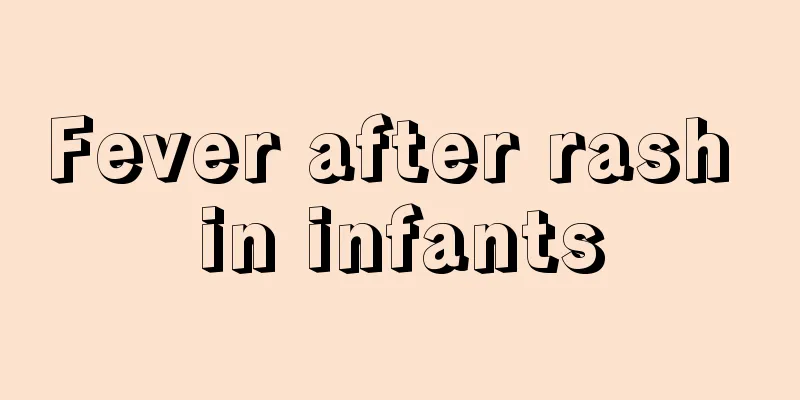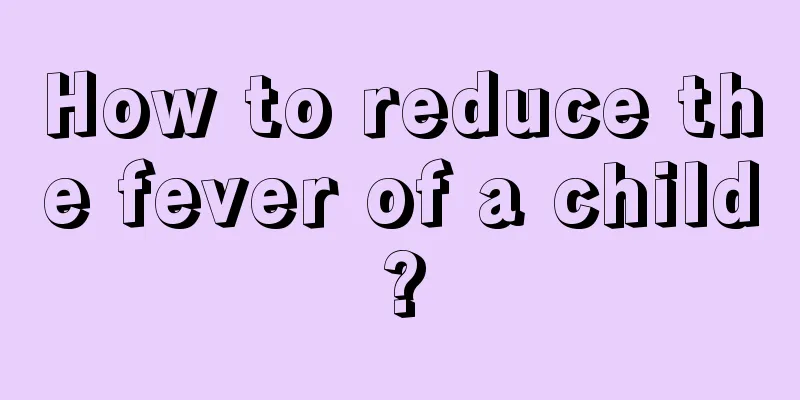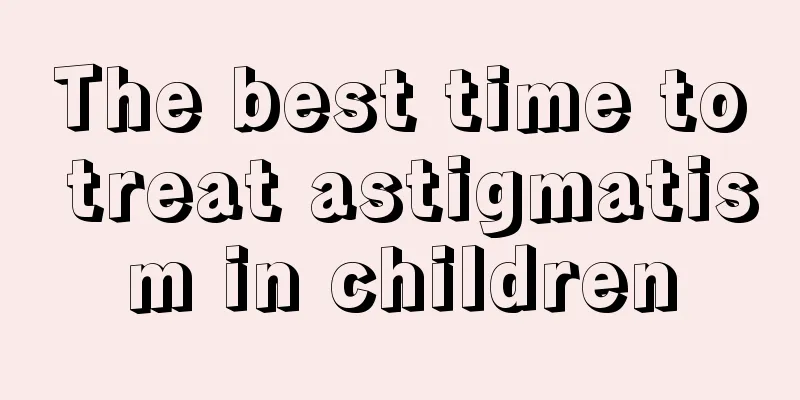Fever after rash in infants

|
Children often suddenly develop some diseases when their parents are not paying attention, which makes parents feel helpless. At this time, parents need to deal with it calmly. Some parents find that their children suddenly develop a rash and a fever. At this time, don't panic too much and be sure to take your child to the hospital for treatment. Let's find out what's going on when a child has a fever after going to the doctor for treatment of roseola infantum?1. What is roseola infantum Roseola infantum, also known as infantile roseola and fever rash, is an acute rash infectious disease common in infants and young children caused by infection with human herpes virus type 6. When the disease occurs, irregular red spots appear on the back, neck and other parts of the body. Mild cold symptoms or persistent high temperature appear within 3-5 days, and a rash appears within 12-24 hours after the fever subsides. For most babies, the symptoms disappear within 1-3 days. The baby will not feel itchy, and it will heal in about a week unless in special circumstances, so there is no need to worry too much.
Roseola infantum has two stages. After an incubation period of 5-15 days, the following symptoms appear first: 1. The body temperature suddenly reaches 39℃-40℃ and will continue to have a fever for three or four days, but the child's spirit and appetite are relatively good. 2. The fever goes away after taking antipyretics, but the fever comes back again once the effect of the medicine wears off. 3. When the fever is high, most people will have diarrhea and watery stools, but rarely have a runny nose or cough, or the symptoms may be mild. 4. Sometimes high fever convulsions occur, and some children may also have symptoms such as cough, swollen lymph nodes in the neck, and ear pain. 5. Routine blood examination showed a decrease in white blood cells and a significant increase in lymphocytes.
1. Body temperature quickly returns to normal. 2. Small, clear pink spotted rashes appear, which fade when pressed. They are mostly distributed on the head and trunk and can last for about 4 days without pigmentation or desquamation. 3. Most cases occur at 6-12 months of age, and 50%-60% of children develop the disease at 8-10 months of age. Healthy children rarely have complications, but immunocompromised children may develop complications such as hepatitis or pneumonia. Because meningitis can resemble a childhood emergency, doctors will do further testing on your child to rule out bacterial causes of meningitis, among others. |
<<: Is it normal for babies to have mushy stools?
>>: Why do my hands and feet feel cold when I have an acute rash?
Recommend
What is the cause of premature graying of hair?
Now my friends around me have always been trouble...
What is the normal armpit temperature for children?
The normal body temperature of our human body is ...
Hand, foot and mouth disease recipes
Hand, foot and mouth disease is contagious, so tr...
Who should be screened for newborn fundus?
Newborn fundus screening is a way to screen wheth...
What to do if your child has high white blood cell count
High white blood cell count in young children is ...
Can children wear high heels?
Most women will wear high heels for the sake of b...
Red pimples on baby's face and hands
Babies' constitutions are naturally weaker th...
What to do if a baby scratches his face?
Babies like to grab things during their growth pe...
What should children eat in the morning?
It is said that a day's plan begins in the mo...
Why do children bite their nails?
I believe that many parents who care about their ...
Why are the skin on my child's palms peeling?
Children's health is a concern for parents. I...
Symptoms of a ruptured eardrum in a baby
There is a tympanic membrane inside the ear, whic...
What is the reason for the small red spots on the forehead of the newborn baby?
Many expectant mothers are troubled by a phenomen...
What should I do if my child has severe nasal congestion?
From a clinical perspective, there are many reaso...
Can children use buckwheat pillows?
Nowadays, there are many pillows on the market. D...









